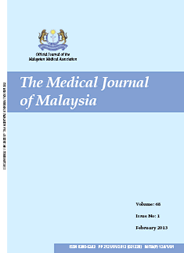MJM, Vol 70 Supplement 1 September 2015
Mathematical modelling of disease transmission
dynamics: from theories to applications
HART Consultancy, Malaysia
ABSTRACT
There has been a growing interest in the use of mathematical methods in the study of the epidemiology and population dynamics of infectious disease. In the field of mathematical modelling, the early literature were most commonly abstract and theoretical in nature. In recent years, more and more research and application of mathematical models deal with the practical issues which are of major concern to public health professionals.
Mathematical modelling involves the computational simulation of the interplay of the key factors that drives the transmission of an infection within a specified population. The progression of diseases throughout populations can then be simulated and quantified to produce estimates and projections.
This paper will first and foremost clarify what is meant by mathematical modelling of infectious diseases, discuss briefly the evolution of the field of mathematical modelling and the basic principles and concepts that govern disease modelling. The links between theories and practical applications will be discussed through examples such as i) herd immunity and simulating the effects of changing vaccine coverage in a population; ii) the evolution of HIV disease transmission models accounting for differences between populations, different modes of transmission and the effects of treatment and prevention measures; iii) the benefits of a theoretical model in the preparedness for and management of emerging outbreaks; and iv) the use of mathematical models beyond epidemic simulation particularly in monitoring and evaluation of the impact and cost-effectiveness of large-scale intervention programmes.
The application of mathematical models as a tool in understanding epidemics as well as in the strategic planning of intervention measures and the evaluation of existing programmes is important to further strengthen existing public health efforts. A good understanding of what mathematical models are, and what they can (and cannot) do, is essential.
